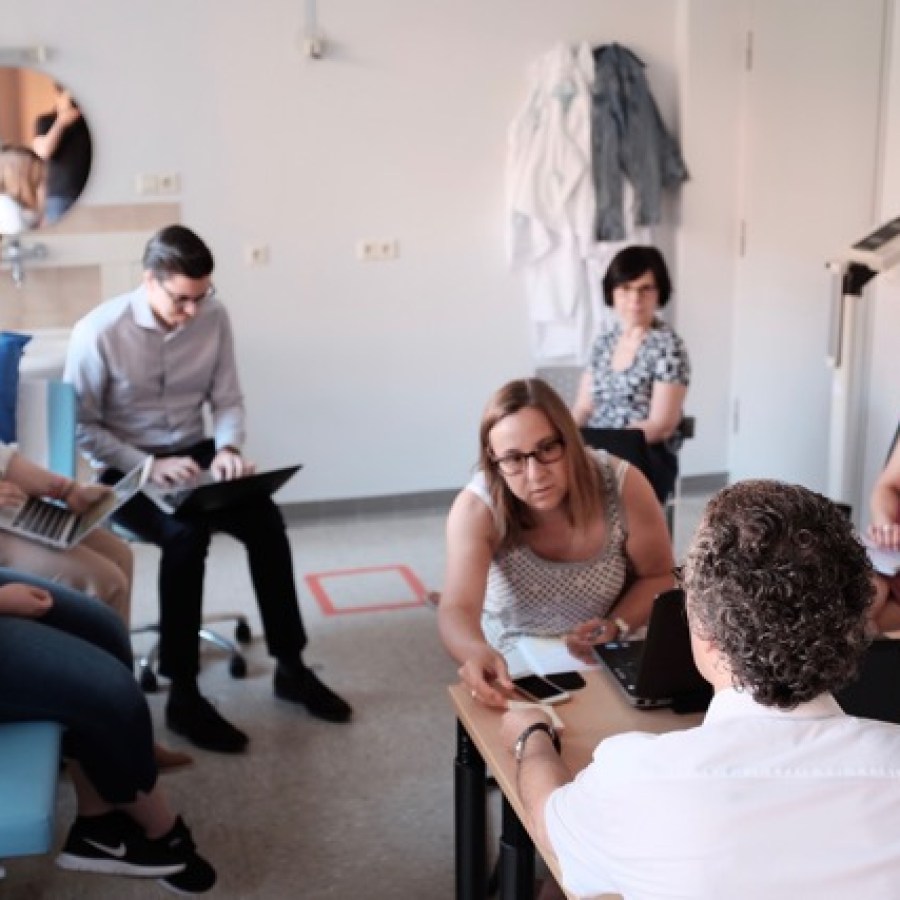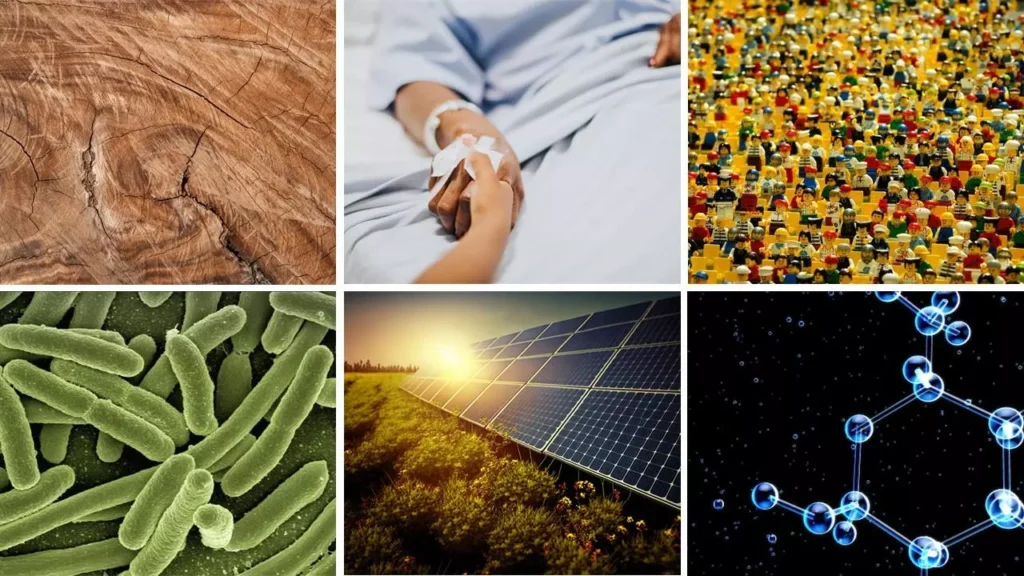10 selected Research Luxembourg results – June 2025
03 July 2025

Luxembourg News in Science & Research
Can the emigration of skilled individuals create new opportunities and foster development in their countries of origin? And what role does waist circumference play in type 1 diabetes? Here’s the latest scientific news from Luxembourg.
This article was originally in French and German on science.lu
How entrepreneurs perceive their impact on biodiversity: New insights point to a perception gap
SnT (University of Luxembourg)
A recent study involving 3,469 entrepreneurs from 28 European countries shows that those in the primary sectors—such as agriculture, forestry, and fishing—tend to view their impact on biodiversity as less harmful than entrepreneurs in industry and services. Interestingly, this perception gap is less marked in countries where the economy is more dependent on the primary sector.
While primary sector entrepreneurs are among the main drivers of biodiversity loss, they are also highly dependent on a healthy and diverse biosphere. The researchers hope these findings will encourage further exploration of the links between entrepreneurship and biodiversity, and help shape policies that engage businesses in conservation efforts.
Press release
Mediterranean diet associated with lower blood pressure
Luxembourg Institute of Health (LIH)
A new LIH study examines the association between diet quality and healthy aging. The results show that greater adherence to the Mediterranean diet is significantly associated with lower blood pressure (and therefore, better overall health).
The Mediterranean diet is rich in nutrients and dietary fiber, and low in processed foods, salt and simple sugars. The participants, aged between 45 and 85 at the outset, were followed for nine years.
The condition of the blood vessels is a key factor in cardiovascular disease, with blood pressure being the most important marker. High blood pressure is a sign of vessel stiffness and deterioration, which increases the risk of stroke and heart attack.
Press release
Emigration of skilled people creates new opportunities and stimulates development in the country of origin
Luxembourg Institute of Socio-Economic Research (LISER)
Emigration of skilled individuals can create new opportunities and foster development in their countries of origin—a surprising finding from a study by Professor Catia Batista of LISER’s Crossing Borders programme.
This positive impact is driven by remittances, return migration, knowledge spillovers, and educational incentives. Drawing on causal evidence and empirical studies, the authors show that emigration can actually boost a country’s overall human capital rather than deplete it.
LISER notes that the study supports its previous research on migration and development, suggesting that well-managed mobility can be a powerful tool for progress and a fresh lens for migration policy.
Press release
Discover young researchers tackling the economics of migration
The importance of waist circumference in patients with type 1 diabetes (T1DM)
Luxembourg Institute of Health (LIH)
In people with type 1 diabetes (T1DM), abdominal fat is a better indicator of cardiovascular risk than weight or BMI alone. A recent study involving Guy Fagherazzi of the LIH highlights the need to consider fat distribution—not just body weight—in cardiovascular prevention for T1DM.
Like the general population, individuals with T1DM face issues of overweight and obesity. Researchers assessed 10-year cardiovascular risk using both BMI and waist-to-height ratio, a measure of visceral fat. Their finding: visceral adiposity is a more reliable risk marker than overall weight, in both men and women.
Further research is needed to clarify the role of fat distribution in T1DM and its implications for preventive care.
Certain rare genes increase the risk of developing Parkinson’s disease
NCER-PD, Luxembourg Centre for Systems Biomedicine (LCSB), Centre Hospitalier de Luxembourg (CHL), Laboratoire National de Santé (LNS)
This new study investigates how rare genetic variants—specifically pathological forms of the GBA1 gene—increase the risk of developing Parkinson’s disease. It also explores how this risk is modified by the rest of an individual’s genetic makeup, using a tool called the Polygenic Risk Score (PRS). The PRS reflects the combined effect of many common genetic variants, each contributing a small amount to the overall risk.
The researchers found that approximately 9% of people with Parkinson’s carried a pathological GBA1 variant, compared to about 5% of people without the disease. GBA1 carriers had a consistently higher baseline risk of developing Parkinson’s, regardless of their PRS group.
However, the level of risk increased with a higher PRS. For example, a GBA1 carrier with a high PRS had up to 2.3 times greater risk than a carrier with a low PRS. These findings suggest that both rare and common genetic factors jointly shape the risk of Parkinson’s disease.
New surgical approach developed at CHL enables repair of knee meniscus without removal
Centre Hospitalier de Luxembourg (CHL)
Dr. Maximiliano Ibanez, an orthopaedic specialist at CHL, has won the prize for best surgical technique at the Spanish Arthroscopy Association congress. Developed at CHL’s orthopaedics department, his innovative method allows meniscus tears to be repaired without removing the cartilage.
The meniscus is a crescent-shaped cartilage in the knee that stabilizes the joint and absorbs shock. In the past, damaged menisci were often partially or fully removed, increasing the risk of joint wear and osteoarthritis. Today, doctors aim to preserve it whenever possible. Dr. Ibanez’s technique reinforces the repair by adding a small piece of tendon from the thigh muscle, improving recovery outcomes.
Press release
Clay soils shrink under the effect of heat, even if already highly compacted
FSTM (University of Luxembourg)
This new study investigates how fine-grained soils—mainly composed of silt and clay—react to heat. These soils are plastic, have low permeability, and are sensitive to water. Researchers tested three factors in the lab: compaction level, past loading, and plasticity.
Surprisingly, when heated and allowed to lose water, clays tend to contract—even if they were already highly compacted. This challenges the assumption that such soils should swell under heat.
These findings help better predict risks like subsidence and cracking in buildings or roads built on these soils in heat-exposed regions.
Digital Health: Two new tools to classify European digital medical devices
Luxembourg Centre for Systems Biomedicine (LCSB), Centre Hospitalier de Luxembourg (CHL), Luxembourg Ministry of Health and Social Security
Digital medical devices—like smartphone health apps or wearable sensors—are expected to play an increasingly central role in healthcare. A European working group established in 2022 has now introduced two new tools designed to classify these devices, helping to evaluate their benefits and ease their integration into daily healthcare practice.
Across Europe, both patients and healthcare professionals are turning more to digital health tools. However, most EU member states still lack a comprehensive legal framework, and regulations vary widely, creating barriers to access and reimbursement.
The two new tools aim to harmonize how digital medical devices are assessed across Europe. This should help speed up their adoption in hospitals, clinics, and homes, while ensuring safety, effectiveness, and fair access for all citizens.
Press release
Earth’s ability to reflect sunlight leads to cooling
Luxembourg Institute of Science and Technology (LIST)
The Earth’s ability to reflect sunlight, known as surface albedo, can help counteract global warming. Some sunlight is reflected back into space, while the rest is absorbed, warming the planet. Forests absorb more sunlight, whereas deserts and snow-covered areas reflect more.
A new study co-authored by Aolin Jia, a postdoctoral researcher at LIST, shows that human activity and climate change have altered global landscapes, increasing surface reflectivity. This has led to a small but measurable cooling effect. Using two decades of satellite data, the study assessed how land use, land cover changes, and snow dynamics affected albedo between 2001 and 2020.
Press release
The planctomycete bacterial community harbors unique genetic diversity
Luxembourg Institute of Science and Technology (LIST), FSTM (University of Luxembourg)
Planctomycetes are aquatic and terrestrial bacteria involved in organic matter breakdown and nitrogen cycling. A new study examined their presence in environments rich in organic matter—such as soils, termite nests, intestines, and sewage sludge.
These bacteria were found in all environments studied, with high abundance in soils and sediments (up to 10% of the bacterial community), but much lower levels in intestines and almost none in manure.
Studying microbial communities helps reveal both species diversity and ecological roles. Planctomycetes may act as genetic reservoirs, supporting ecosystem stability through their unique genetic diversity.
Author: Diane Bertel
Editor: Lucie Zeches (FNR) ; Nicolas Stamets (Research Luxembourg)












